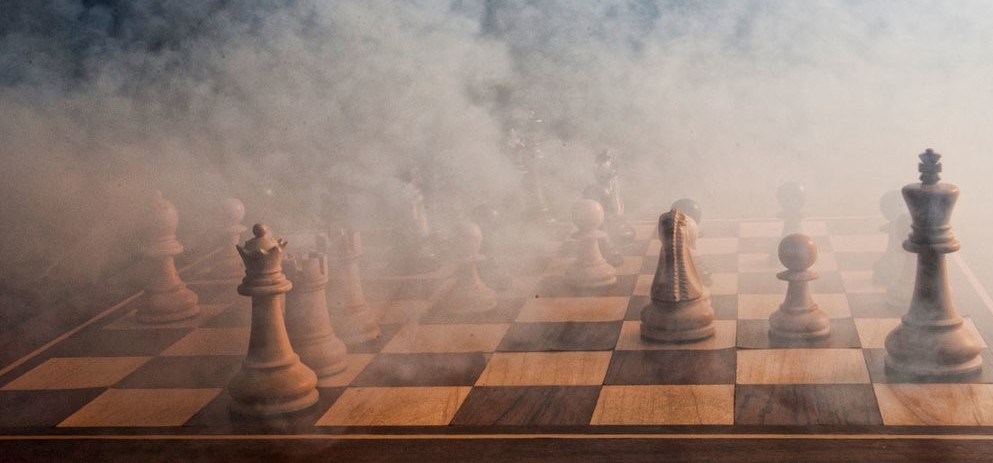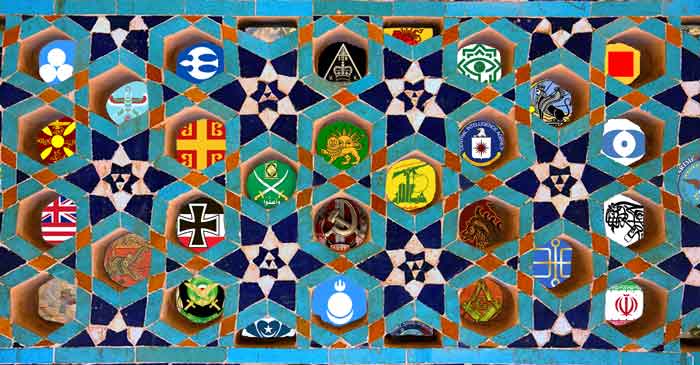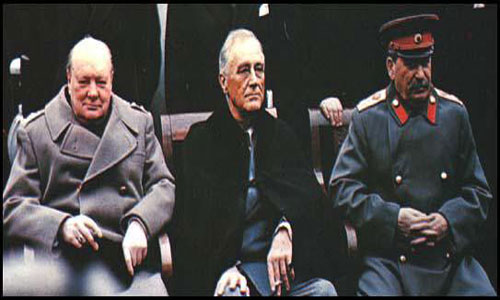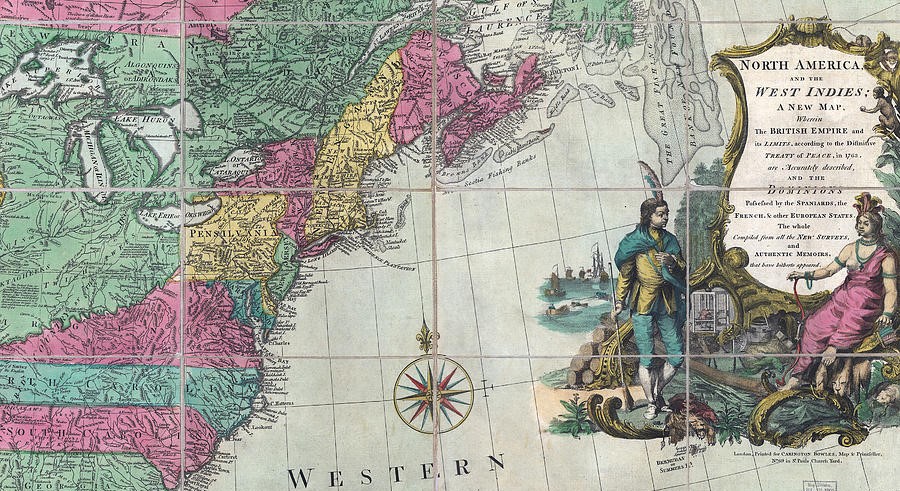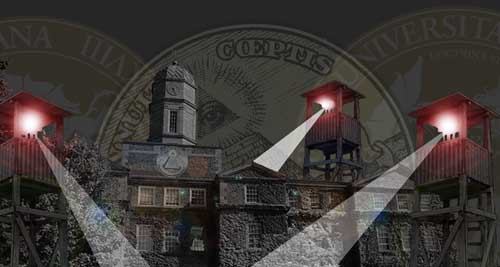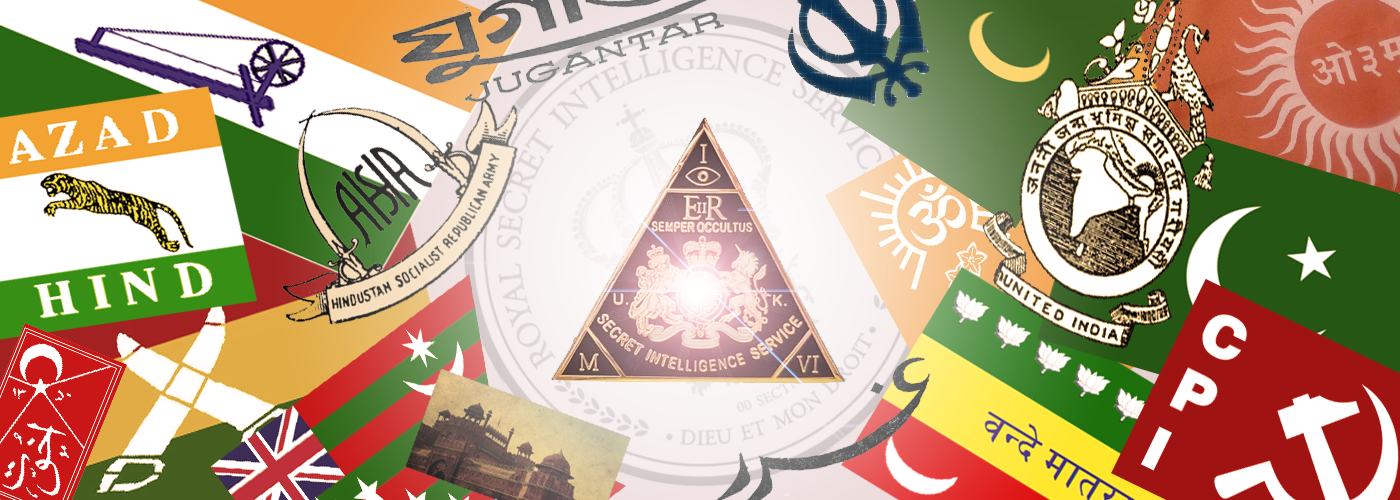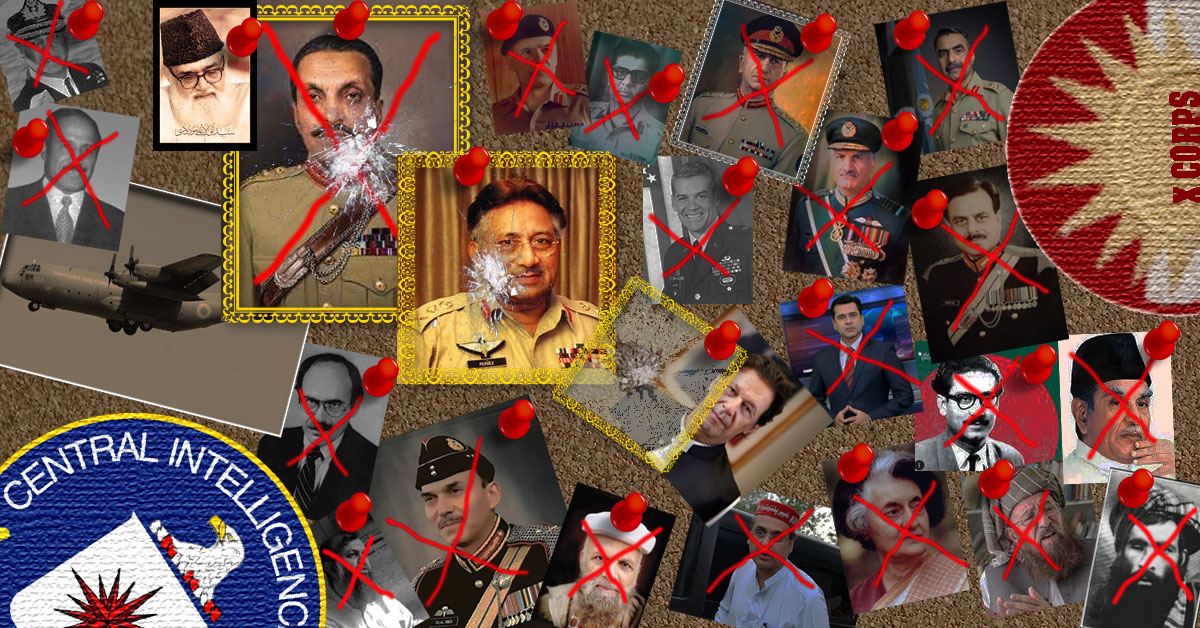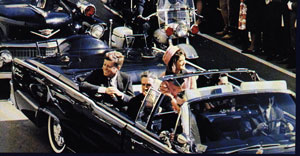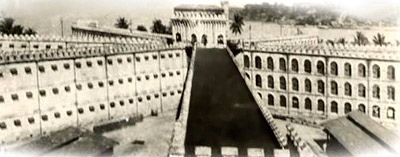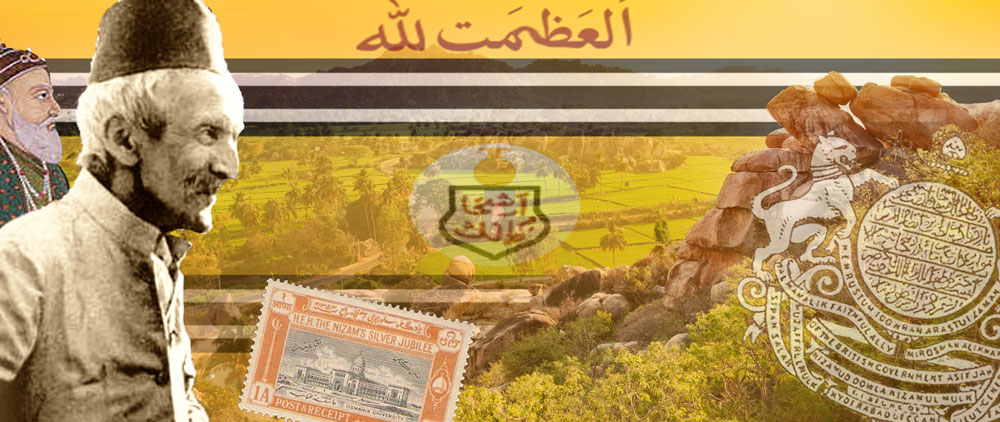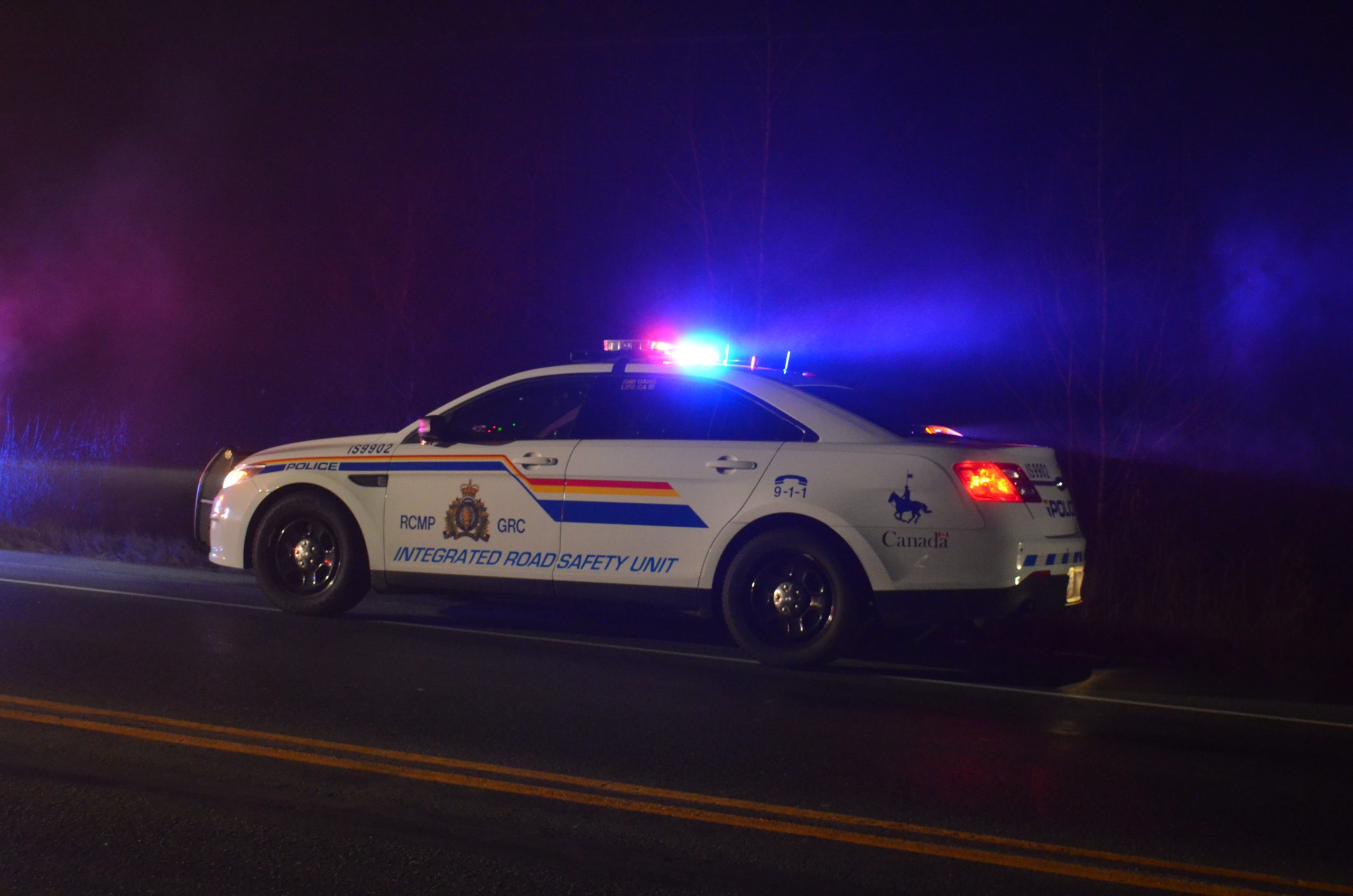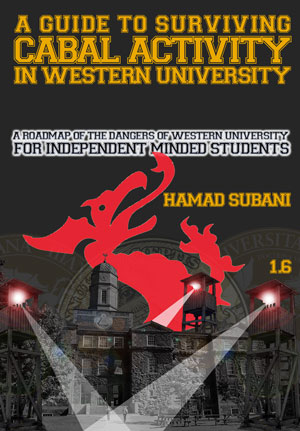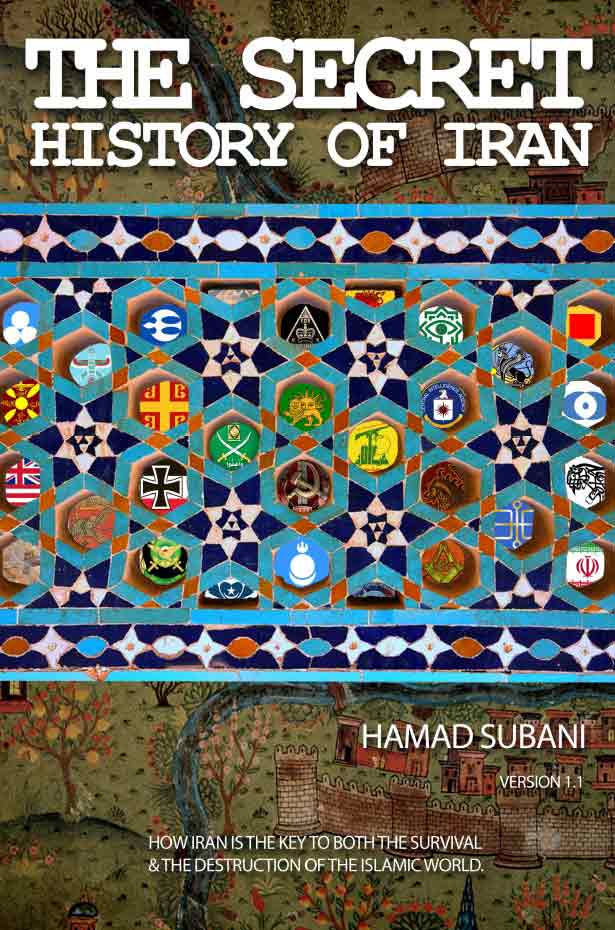
The Strange Fate of Jhansi State
The British created a mechanism to annex weak princely states known as the Doctrine of Lapse. Any state which had a succession issue, or no available heir to the throne became property of the East India Company. However, they never applied the doctrine to Spook princely states. But for non-Spook states, it was a different story. In the case of Satara state, the rulers of whom were actual descendants of Shivaji, the British were quick to interfere. In 1839, the British interfered in their succession process and appointed Appa Sahib, a claimant who had no heir. In 1848, when he died, they annexed the state! Since rulers of Satara still had more legitimacy to the Maratha Empire than the newfangled Peshwas, they were seen as a threat even without a formal state. In the Rebellion of 1857, two former princes of Satara were banished, and the son of Rango Bapuji (an envoy of Raja Shahaji of Satara State, who was sent all the way to London to plead) was hanged under some pretext. Rango Bapuji later disappeared. It is interesting to note that earlier, when Rango Bapuji was pleading in London and hiring barristers to further the claims of the rulers of Satara, he was approached by none other than a confidante of Nana Sahib, Azimullah Khan. It seems that Azimullah Khan was tasked by the Phoenicians with trying to enlist[1]An Indian Nationalist (Later attributed to Vinayak Damodar Savarkar), The Indian War of Independence of 1857 (London: Unknown 1909).p 59 Rango Bapuji to abandon his efforts at pleading in London and instead participate in the upcoming Rebellion.
The same happened to the Maratha princely state of Nagpur. It seems the Phoenicians wanted the former Queen Rani Banka to participate in the 1857 Project so that they could further confiscate her personal estates (Her kingdom had already been annexed). They also wanted the Maratha state of Kolhapur,[2]It seems a younger brother (Chimabhau Saheb of Sawantwadi) of the King of Kolhapur did rebel, with the assistance of rebel sepoys from the British cantonments at Kolhapur, Dharwar and Belgaum, and promises of support made by Nana Sahib, but official support was refused to him. He was later deported to Karachi. which was run by another branch of Shivaji-descendants to participate.[3]An Indian Nationalist (Later attributed to Vinayak Damodar Savarkar), The Indian War of Independence of 1857 (London: Unknown 1909).p 64.
But for Spook states, it was a different story. In the case of Dhar State, the British falsely accused it of participating in the 1857 Rebellion and seized the state. They later returned it but transferred the Berasia district to the neighbouring Spookopolis of Bhopal.[4]The Berasia district was historically associated with Bhopal. So here we have the British advancing the interests of a Spook princely state. In the case of the Spook-state of Gwalior, the British allowed the appointment of a young child after the Maharaja died. When certain factions rejected him, the British intervened militarily to restore him, just because he was a Spook-candidate. The estate of Kirwi was owned by Maratha Chitpavani brahmins. Their chief Vinayak Rao died without a son. Theoretically, the British should have annexed the state, but instead, we see them supervising the whole state on behalf of his adopted son, Rao Madhav.[5]An Indian Nationalist (Later attributed to Vinayak Damodar Savarkar), The Indian War of Independence of 1857 (London: Unknown 1909).p 388. It was only after the estate began openly supporting the rebels that it was annexed.
We are told they tried applying the Doctrine of Lapse to Jhansi state in 1853 when the king of Jhansi State, Raja Gangadhar Rao died.[6]He loved theatre so much that he built one in Jhansi itself! The problem is that Jhansi State, like its neighbouring state of Gwalior, was a Spook state. And as we have seen from the above, all Spook states were tacitly excluded from the Doctrine of Lapse. In fact one earlier ruler of Jhansi (Raghunath Rao III) was so incapable that the British administered the state for him, rather than annex it! British presence in Jhansi state intended to protect the Rani.
And the Rani of Jhansi did have a successor, an adopted infant named Damodar, whose adoption had been formalized in the presence of the British. By 1857, the Rani was also getting a comfortable pension by the British.
It is at this point that the history of Jhansi State becomes inexplicable (as far as mainstream histories are concerned).
We are told that “rebels” took control of the fort of Jhansi (along with its Treasury and Arsenal) on 4th June 1857[7]An Indian Nationalist (Later attributed to Vinayak Damodar Savarkar), The Indian War of Independence of 1857 (London: Unknown 1909).p 195 without much of a fight. But who were these rebels? Savarkar tries to mislead us into thinking that they were locals of Jhansi, led by two Muslims, Rasaldar Kala Khan and Tahsildar Mahomed Hussein. Later histories tell us that they were rebels of the 12th Bengal Native Infantry. Or Company men.
Who controlled the fort before them? If it was the British (no strong proof of that), why did they desert it and instead hole up in a smaller city fort? The rebels then surrounded this small fort, and after a prominent citizen of Jhansi, Hakim Salay Mahomed[8]An Indian Nationalist (Later attributed to Vinayak Damodar Savarkar), The Indian War of Independence of 1857 (London: Unknown 1909).p 195 promises them a peaceful surrender, they open the doors on the 7th of June 1857. They are marched to a place called Jokan Bagh and killed. We are told there are 66 of them, including women and children (The number 66 is a Spook marker). The role of the Rani in this massacre is disputed to this day. Some victims appear to have Spook names (or was the number inflated using Spook names?). Savarkar absolves the Rani of any role on the massacre.[9]An Indian Nationalist (Later attributed to Vinayak Damodar Savarkar), The Indian War of Independence of 1857 (London: Unknown 1909).p 196 Note 1. There are some British claims that the Rani later paid money to those who conducted the massacre (if there really was one).
By June 11th 1857, the “rebels” suddenly pack up and leave the fort, letting the Rani gain control of it without contest! We are told they head off to Delhi, because that’s what rebels do after a massive fort falls into their hands, making them kingmakers of a princely state.
The Rani does not proclaim Swaraj. Instead she coolly assumes charge of her state, corresponding with British officials trying to explain what had transpired and even requesting their help! The British reply and tell her to manage the state for the interim!
In January of 1858, the British finally started their Central India campaign, aimed at mopping up all rebels and rebel states in Central India, including those in the environs of Jhansi. As if concurrently, the rebels ramp up their efforts in the region, whereas saving Delhi (and later Lucknow) should have been their priority. In March of 1858, a rebel force of 20,000 under the command of Tatya Tope sets off for Jhansi. Where did he get so many rebel soldiers from? It seems they are actually the garrison of Gwalior, which is now masquerading as a rebel army! Strangely, the British would never question the complicity of the rulers of Gwalior in this. Tope, is a Deshastha Brahmin of Marathi origin, while the Rani of Jhansi is a Karhade brahmin of similar Marathi origin. Tope sets himself up in the fortress of Kalpi, which happens to belong to Jalaun State, which was dominated by Deshastha brahmins. Strangely, Tatya Tope does not reinforce the fort of Jhansi, and instead battles the British in the woods. We are told he is defeated.
On 14th February 1848, we are told that the Rani of Jhansi finally issued a proclamation of joining the Rebellion against the British, specifically urging all neighbouring Rajas to join the cause. The proclamation also calls for a joint Hindu-Muslim alliance.
The British capture the fortress of Jhansi on 3rd April 1858. Strangely enough, the fortress is largely intact. Even more stranger is the fact that the Rani of Jhansi somehow manages to flee the surrounded fortress. We are told that she jumped over the massive moat wall on horseback along with her infant son strapped on her back, and the landing actually killed the horse! How she escaped British lines in the area remains a mystery. And why did she escape, when the entire town was literally her ally? She had up to 14,000 volunteers from the town assisting her.

After the fall of Jhansi fort, the British conducted a thorough massacre of the inhabitants of the town. Even women and children are bayoneted and thrown into wells (to leave no eyewitnesses?). The number of people killed may be up to 5000.
We are told she finally teams up with Tatya Tope and the rebels, who are now supplemented by the Maratha Nawab of Banda (a descendant of the Chitpavani Peshwas) and a nephew of Nana Sahib named Rao Sahib. We are told they are defeated by the British in two successive battles May 1858.
And now the unthinkable happens.
As you may be aware, the Spookopolis of Gwalior was up north of Jhansi fort (25 hours by walking). Like Jhansi state and Indore state, this was also a Maratha state established during the last days of the Maratha Confederacy of the Chitpavani Peshwas. And like Jhansi state and Indore state, Gwalior state was closely allied with the British. Gwalior state operated out of a massive fortress initially built by Rajputs and used by both the Delhi Sultanate and the Mughals. Eventually it fell into British hands, who then sneakily passed it on to Gwalior state in 1844, despite the fact that the Jat state of Gohad had a more legitimate claim to it (their ruler Rana Chattar Singh was poisoned by the Chitpavani Peshwas in 1785). In other words, this fortress was now an interchangeable Phoenician asset.

We are told that the on 1st June 1858, the thrice-defeated rebels and the fleeing Rani of Jhansi occupied the insurmountable fort of Gwalior! (and the city). And the Maratha ruler of Gwalior fled to Agra rather than make any attempts to retake it! Since this does not make any sense, we are told that the majority of his army defected to the rebels, which is not exactly how things worked in Maratha princely states. Savarkar gleefully misleads about this mysterious event as a case of vox populi. To quote,
And therefore, this Revolution of 1857 must be recorded in history as the first indication in modern India of the omnipotence of the vox populi, the power of the people. If Scindia joins not his country, the country shall not aid him either.[10]An Indian Nationalist (Later attributed to Vinayak Damodar Savarkar), The Indian War of Independence of 1857 (London: Unknown 1909).p 395
We are then told that the Rani got killed on the battlefield, fighting the British near Gwalior on 17th June 1858. To quote,
Lakshmibai was most probably killed, or mortally wounded, during an action at Kotah-ki-Serai near Gwalior. The exact circumstances are unclear as several differing and incompatible accounts exist.
She was supposedly surrounded by the British at this moment, with just 15-20 horsemen,[11]An Indian Nationalist (Later attributed to Vinayak Damodar Savarkar), The Indian War of Independence of 1857 (London: Unknown 1909).p 400 who were all under attack. Yet they manage to immediately cremate her before the British seize her body. To quote,
A faithful servant, Ramchandra Rao Deshmukh, was near. He took her to a cottage near by. Ganga Das Bawa gave her cold water to drink to quench her thirst and a bed to lie down upon. Bathed in blood, this goddess of war reclined on the bed, and then her soul quietly fleeted from her body to heaven! As soon as she was dead, Ramchandra Rao, in accordance with her dying instructions prepared a pile of grass unseen by the enemy; he put her on that pyre and, before the touch of slavery could defile even her dead body, she was cremated.[12]An Indian Nationalist (Later attributed to Vinayak Damodar Savarkar), The Indian War of Independence of 1857 (London: Unknown 1909).p 400
It is unclear what happened to her infant heir. According to some accounts, he was strapped on her back, but it would have been safer to leave him at Gwalior fort. Why she left the security of this massive fortress is just as mystifying as her flight from the largely intact fortress of her bastion at Jhansi.
A Theory of What may have happened
When Phoenicians write histories for the plebs, they completely omit contextual references to what may have been really happening in those times and places.
When Phoenicians write histories for the plebs, they completely omit contextual references to what may have been really happening in those times and places.
One thing they have omitted from the history of Jhansi State is that this Maratha-Peshwa-brahmin state (as well as others such as Gwalior and Indore) were relatively new to the region. The region was called Bundelkhand because it was the turf of Bundela Rajputs, who were smart kings and brave warriors. The Mughals granted them jagirs, recognized them and even married into them, in exchange for them providing fighters for Mughal wars in the Deccan. Imagine how much the Bundela Rajputs would have resented the new Maratha-Peshwa-brahmin states, which were created in their territory. In many cases, they got cheated by the Peshwas despite allying with them. But there was not much they could do, given the fact that these states were strong allies of the British. Not to be left out, they too allied with the British. But unlike these states, they never enjoyed the special crypto-Phoenician camaraderie. Neither did the Bundela Rajputs go overboard in fighting the rebels of 1857 for the British, like the Punjabis did. In fact, Orchha state annoyed the British with its neutrality. In short, they were pragmatic rulers.
The most powerful group of Bundela Rajputs was that of Orchha. They are historically known for their strong relations with the earlier Mughals. They even built a palace in Orchha to welcome a Mughal King in exclusively Mughal style! A later Orchha Raja named Jhujjar Singh rebelled against the Mughals. But after defeating him, Aurangzeb had the magnanimity to reinstate his brother rather than devour his kingdom Doctrine-of-Lapse style. One of their Rajas had originally built Jhansi fort and had settled the adjoining town. Jhansi fort was just a three hour walk away from their capital of Orchha. Orchha State was the only Bundela state not entirely subjugated by the Marathas in the 18th century. Around 1857, the ruler of Orchha was a Raja known as Hamir Singh. A powerful Queen of an earlier Raja named Ladai Sarkar held considerable influence. Another Bundela state of Datia was his close ally.
When the Raja of Jhansi died and the Rani of Jhansi ascended with an infant heir, the rulers of Orchha and Datia became emboldened to slowly start taking back their former territory. Gradually, they began encroaching on the borders of Jhansi state. The Rani of Jhansi being pragmatic, made treaties with them but to no avail.
The 1857 Rebellion was seen as a godsend by the rulers of Orchha. Realizing that the British armies were several days away in North India (and maybe there were no British in Jhansi), they planned on taking the Jhansi fort. And in those times, when the fort fell, so did the State. When the dust of the 1857 Rebellion would settle, the Rani of Jhansi would be expected to make the British mediate. But Orchha State had a better claim to Jhansi fort (umm they built it, remember?) as well as the territory of Jhansi state. The rulers of Jhansi state were not oblivious to this new threat, and acted immediately upon it.
The 1857 Rebellion was seen as a godsend by the rulers of Orchha. Realizing that the British armies were several days away in North India (and maybe there were no British in Jhansi), they planned on taking the Jhansi fort. And in those times, when the fort fell, so did the State.
The rulers of Jhansi state were not in a position to take on the Rajput fighters of Orchha and Datia. And neither were the neighbouring Spookopolis’ of Indore, Gwalior and Bhopal. The British forces could not be immediately dispatched to Jhansi because of the 1857 Rebellion. In fact, having them showing up to rescue Jhansi State would look suspicious. How would British commanders explain this priority to British soldiers besieged in North India? But again, the only plausible way to save Jhansi state from the Bundelas was through British intervention.
And so, British intervention was arranged, by having “rebels” materialize out of nowhere and take Jhansi fort. A token massacre of Europeans was also done (or faked). Now the British could show up in full force to deal with the rebels and reinstate the Rani of Jhansi (but in reality, keeping Orchha at bay).
However, the rulers of Orchha and Datia turned this new development into an even bigger opportunity. They argued that with Jhansi State now under rebel control and the British troops days away, they as British allies were obligated to “free” Jhansi State from the rebels (But once they got in there, they wouldn’t be leaving, and the British would be forced to entertain their historic claims).
In a perfect world, the British could have telegrammed them to fuck off, because the 1857 Rebellion was a British project, and the rebels were in fact led by their men. But that is not how they generally talk to non-Phoenicians.
It thus became necessary to abruptly send the rebels behind the curtain, and make the Rani of Jhansi come out from behind the curtain and visibly take control of things (See Orchha Raja? No more rebels). But that did not stop the ambitions of the Raja of Orchha. They had spies in Jhansi city, and knew well the role of the rulers of Jhansi in the recent events that were attributed to rebels. And so, the forces of Orchha and Datia laid siege to Jhansi fort on 3rd October 1857. 19 days later, they suddenly retreat. We are told that the Rani of Jhansi repelled them. It is more likely however, that the rulers of Orchha and Datia were threatened to back off, by none other than the leader of the Rebellion, Nana Sahib. His headquarters in Kanpur were approximately two days away by horse.
Orchha and Datia backed off, but they were preparing for a final comeback. Likewise, the Rani of Jhansi also began preparing for them. The problem was that it could be too late to wait for British support given the circumstances. Therefore support from the rebels is now openly obtained. By February 1858, she publicly established herself as a rebel leader. To quote,
Lakshmibai, whatever her previous position had been, had little choice but to prepare for the worst. She raised a force of 14,000 volunteers from the population and 1,500 sepoys, made contact with the rebels, strengthened the defences and otherwise prepared for the arrival of the British [or maybe Orchha and Datia]. An intelligence report (quoting from Paul) dated the 7th Feb 1858 from Sir Robert Hamilton says that:-
“Although the Rani proposes not to fight the British government yet she makes every hostile arrangement. Six new large guns have been manufactured, carriages for these and old guns are in the course of construction. About 200 maunds of saltpetre being purchased in the Gwalior district had been bought into the fort. Gunpowder is daily made within the fort. Eight gunners from the Moorar rebels were sent from Kalpi and have been taken into service. They superintend the manufacturing of brass balls…”

But that is not enough. In March 1858 Tatya Tope shows up in person with a rebel force of 20,000! On the way, he is bullying the Rajput state of Charkhari to join the rebellion. If they did so, this beautiful state, known as the Kashmir of Madhya Pradesh, would later fall into British hands. In the same month, Nana Sahib, the literal leader of the 1857 Rebellion also shows up in person! It seems that all these rebels are enough to deter Orchha. In fact, many small Bundela landlords are even considering switching over from British alliance to the rebels. The Phoenicians see this as a great opportunity to permanently rob the Bundelas of their estates. Around this time, the Rani of Jhansi begins spamming the inboxes sending official invitations to all the Bundela Rajas to join the Rebellion with her. Some do take her seriously, such as the Bundela Raja Mardan Singh of Banpura and Lalitpur. It also appears that she has gained some sympathisers in the court of Datia! One noble from the court of Datia, Jawahar Singh Pawar became a commander in Jhansi’s army.[13]A.U. Siddiqui, Indian Freedom Movement in Princely States of Vindhya Pradesh (Delhi: Northern Book Centre) p. 28
But with British troops finally heading towards Jhansi and defeating rebels along the way, Orchha is determined once again, to make a final move on Jhansi fort. Except that this time, the British have fastidiously beaten them to it and laid siege to the fort of Jhansi. This is the end of Orchha’s threat to Jhansi for all time to come.[14]A portion of Jhansi state that was already dominated by Bundelas affiliated with the Orchhas fell to Orchha. But the British would never let Orchha take control of this territory, and instead established a new Bundela state called Khaniadhana. The Phoenicians successfully completed this objective.
The Phoenicians are now facing a new problem. If the Rani of Jhansi is captured with the fall of Jhansi fort, the rebels in the surrounding areas would immediately lose spirit. And most important, all the Bundela Rajas and zamindars who were considering switching over to the rebel side would stay put as British allies. This meant that the approaching British would never avail this once-in-a-bluemoon opportunity to confiscate their states and personal estates. And there was a realistic possibility of Datia State joining the rebels (and later ending up in in British conquest).

And so, it is arranged for the Rani of Jhansi and her retinue to escape the fall of Jhansi fort. The neighbouring Spookopolis of Gwalior immediately lent their impregnable fortress of Gwalior as a replacement fort for the Rani and her rebels. This was necessary to keep the spirit of the rebels (and their Bundela sympathisers) high. Because a Rani without a fort is like a turtle without a shell. The father of the Rani of Jhansi approached the court of Datia begging them to put their differences aside and join the noble cause. The idea was to have the Rani of Jhansi set shop in Datia territory, and the British would soon follow and confiscate Datia state. But the rulers of Datia changed their mind and handed him over to the British. We are told he was executed.
The neighbouring Spookopolis of Gwalior immediately lent their impregnable fortress of Gwalior as a replacement fort for the Rani and her rebels. This was necessary to keep the spirit of the rebels (and their Bundela sympathisers) high. Because a Rani without a fort is like a turtle without a shell.
With Jhansi fort secured from Orchha, and the failure of the Rani and rebels to attract Datia, it was time to stop the show before the smaller Rajas and zamindars who joined the rebels started having second thoughts. And so, we are told the Rani died in the battlefield in the looming shadow of Gwalior fort. Why she abandoned the security of this impregnable fortress still remains a mystery.
If the royals of Jhansi had actually survived, they would have been immediately given refuge in the neighbouring Spookopolis of Gwalior. In the aftermath of the fall of Jhansi state, something inexplicable happened. The territory of Jhansi State and Jhansi city were to be annexed as British territory. Instead, they emerge as a province of the Spookopolis of Gwalior! That would be a convenient way to let the royals of Jhansi continue their rule from Gwalior, but this time, without the persistent threat of Orccha and Datia. But as time passed, and the legend of the Rani grew, the Phoenicians realized that people would notice this anomaly. And in 1886, the territory of Jhansi state and Jhansi city was quietly switched to British rule! The Rajas of Orchha and Datia were upgraded to Maharajas by the British, complete with 15 gun salutes, and were showered with all sorts of privileges, maybe because they knew too much. The Bundela Raja of Khaniadhana was greenlighted to create the Chamber of Princes in 1920, which was an institution seeking nationhood for these princely states.
The territory of Jhansi State and Jhansi city were to be annexed as British territory. Instead, they emerge as a province of the Spookopolis of Gwalior!
A great deal of disinformation regarding Jhansi State comes from Savarkar’s 1909 book, The Indian War of Independence of 1857. It was allegedly published on 10th May 1909, the 52nd anniversary of the 1857 Rebellion, which officially began on 10th May 1857. Few people are aware that a 1910 edition of this book carried an actual photo of the Rani of Jhansi!(There were no known authentic photos or paintings of her). It was in a postcard included as a book page. It was intended to be torn out and used for ordering more copies of the book. The following ordering information is visible on the postcard:

The book on “The Indian War of Independence of 1857” can be secured by application to Mrs. B. R. Cama, 25 Rue de Pont-thieu, Paris, France. Or F. H. Publication Committee, 749 Third Ave New York. Cloth $2.00 Paper $1.50.
B. R. Cama was a Spook from Bombay. She was from the Parsi business royalty of that place, who were the most prolific British collaborators. While Savarkar did not publicly identify with the book at that time, his organisation’s name Abhinav Bharat can be seen in the postcard.
However, this postcard was excised from subsequent editions of the book, and the 1910 edition was expunged from libraries worldwide. It seems someone with sharp eyes (and and a mind) had noticed that the photo in the postcard was not that of the Rani of Jhansi but a childhood photo of one of the sinister-looking Begums of the neighbouring Spookopolis of Bhopal. This should give you a hint of who else was involved in Savarkar’s book project, or rather who was in charge of the historical cover-up surrounding the Rani of Jhansi. Spook-authors often insert inside jokes into their project. Remember that Savarkar set out for London in 1906. The book was first published in 1909. All the while, Savarkar was also studying law at Greys Inn. Would it be possible for him to research and put together a 444 page book at the same time? Maybe it was a collaborative effort.

Some say that the over-publicity of the Rani of Jhansi, versus other 1857 heroes such as Kunwar Singh, Narpati Singh and Bhaskar Rao Bhave (whose names are unknown to most Indians) has to do with her memory being manipulated by feminists. But again, there is another female hero of 1857, Kittur Chennamma, who remains unknown to most Indians.

CONTENTS
- The Secret History of British India’s “Freedom Movements.”
- An Introduction to the “1857 Project”
- The 1857 Project as a Spook Playbook for later Ops in the Subcontinent
- Phoenician Spookopolis’ Across the Subcontinent
- A (long) note on Fazl-e-Haq Khairabadi
- The Strange Fate of Jhansi State
- Later “Freedom Movements” that follow the 1857 Rebellion Playbook
- How the Blueprint Unfolded Part I – The Bengal Front
- How the Blueprint Unfolded Part II -The Ghadr Party and the Punjab Front
- How the Blueprint Unfolded Part III -The Communalists
- How the Blueprint Unfolded Part IV – The Non-Cooperationists
- Conclusion; Revisiting the “Original Blueprint” + Epilogue: Reactivation!
| ↑1 | An Indian Nationalist (Later attributed to Vinayak Damodar Savarkar), The Indian War of Independence of 1857 (London: Unknown 1909).p 59 |
|---|---|
| ↑2 | It seems a younger brother (Chimabhau Saheb of Sawantwadi) of the King of Kolhapur did rebel, with the assistance of rebel sepoys from the British cantonments at Kolhapur, Dharwar and Belgaum, and promises of support made by Nana Sahib, but official support was refused to him. He was later deported to Karachi. |
| ↑3 | An Indian Nationalist (Later attributed to Vinayak Damodar Savarkar), The Indian War of Independence of 1857 (London: Unknown 1909).p 64 |
| ↑4 | The Berasia district was historically associated with Bhopal. So here we have the British advancing the interests of a Spook princely state. |
| ↑5 | An Indian Nationalist (Later attributed to Vinayak Damodar Savarkar), The Indian War of Independence of 1857 (London: Unknown 1909).p 388 |
| ↑6 | He loved theatre so much that he built one in Jhansi itself! |
| ↑7 | An Indian Nationalist (Later attributed to Vinayak Damodar Savarkar), The Indian War of Independence of 1857 (London: Unknown 1909).p 195 |
| ↑8 | An Indian Nationalist (Later attributed to Vinayak Damodar Savarkar), The Indian War of Independence of 1857 (London: Unknown 1909).p 195 |
| ↑9 | An Indian Nationalist (Later attributed to Vinayak Damodar Savarkar), The Indian War of Independence of 1857 (London: Unknown 1909).p 196 Note 1 |
| ↑10 | An Indian Nationalist (Later attributed to Vinayak Damodar Savarkar), The Indian War of Independence of 1857 (London: Unknown 1909).p 395 |
| ↑11 | An Indian Nationalist (Later attributed to Vinayak Damodar Savarkar), The Indian War of Independence of 1857 (London: Unknown 1909).p 400 |
| ↑12 | An Indian Nationalist (Later attributed to Vinayak Damodar Savarkar), The Indian War of Independence of 1857 (London: Unknown 1909).p 400 |
| ↑13 | A.U. Siddiqui, Indian Freedom Movement in Princely States of Vindhya Pradesh (Delhi: Northern Book Centre) p. 28 |
| ↑14 | A portion of Jhansi state that was already dominated by Bundelas affiliated with the Orchhas fell to Orchha. But the British would never let Orchha take control of this territory, and instead established a new Bundela state called Khaniadhana. |


